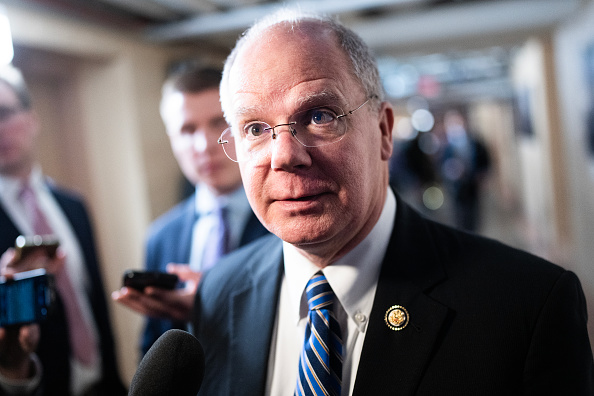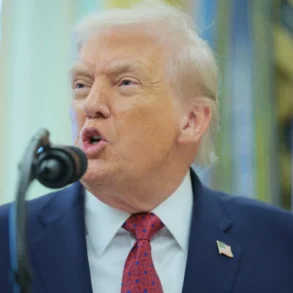In a bold move to address some of America’s most pressing issues, Congressman Nick Langworthy has thrown his support behind a new House budget bill that aims to reform Medicaid, boost energy independence, and navigate the complex landscape of tariffs and economic policy. This legislation, which has sparked both optimism and debate, seeks to tackle rising healthcare costs, reduce reliance on foreign energy, and stabilize the federal budget. But as lawmakers push for these ambitious goals, challenges like tariffs and their unintended consequences are making the path to reform trickier than expected. Let’s dive into what this bill means, why it matters, and the hurdles it faces.
Medicaid Reform: A Push for Efficiency and Savings
At the heart of the House budget bill is a plan to overhaul Medicaid, the federal program that provides healthcare to millions of low-income Americans. Medicaid costs have been skyrocketing, with projections estimating the program will consume nearly $1 trillion annually by 2030 if left unchecked. The bill proposes measures to streamline the program, such as tightening eligibility requirements, encouraging work incentives for able-bodied recipients, and giving states more flexibility to manage their Medicaid programs. Congressman Langworthy argues that these reforms are essential to ensure Medicaid remains sustainable while continuing to serve those who need it most.
The Paragon Health Institute, a think tank focused on healthcare policy, supports this approach. Their research suggests that Medicaid’s current structure is riddled with inefficiencies, including overpayments to providers and outdated administrative systems. By modernizing how Medicaid operates—through measures like value-based care, where providers are rewarded for patient outcomes rather than the number of services performed—the bill aims to save billions without slashing benefits for the most vulnerable. For example, Paragon highlights that states like Indiana have successfully used block grants to tailor Medicaid to local needs, improving care while cutting costs. This could be a model for nationwide reform, ensuring taxpayer dollars are spent wisely.
Energy Independence: Reducing Reliance on Foreign Oil
Alongside Medicaid reform, the bill prioritizes energy independence, a goal that resonates strongly in regions like New York’s Southern Tier, which Langworthy represents. The legislation includes provisions to expand domestic energy production, such as increasing oil and gas drilling on federal lands and investing in renewable energy research. Langworthy emphasizes that reducing America’s dependence on foreign oil not only strengthens national security but also creates jobs and lowers energy costs for families. With global energy markets often disrupted by conflicts or supply chain issues, boosting homegrown energy is seen as a way to stabilize prices and protect consumers.
For instance, the bill supports expanding natural gas production, which has already helped the U.S. become a net energy exporter in recent years. By streamlining regulations and encouraging innovation in clean energy technologies, the legislation aims to balance economic growth with environmental responsibility. This dual approach could appeal to both traditional energy workers and those advocating for a greener future.
The Tariff Twist: A Complication for Reform
However, the path to achieving these goals isn’t without obstacles, and one major hurdle is the impact of tariffs. As the National Review points out, recent tariffs on imported goods—like steel, aluminum, and medical supplies—are making Medicaid reform harder. Tariffs increase the cost of essential items, such as medical equipment and pharmaceuticals, which Medicaid relies on to provide care. For example, a tariff on imported insulin pumps could drive up costs for hospitals, which then pass those expenses on to Medicaid, inflating the program’s budget.
These higher costs create a ripple effect. States, already stretched thin managing Medicaid, face tougher choices about where to cut or how to fund the program. The National Review argues that while tariffs are meant to protect American industries, they can inadvertently strain public programs like Medicaid by raising the price of goods needed to deliver healthcare. This tension highlights a broader challenge: how to balance economic protectionism with the need for affordable healthcare and fiscal responsibility.
Why This Matters to Everyday Americans
For the average high school student or family, this budget bill might seem like just another piece of Washington jargon. But its implications are real. If Medicaid reform succeeds, it could mean better healthcare access for low-income families without bankrupting the system. Energy independence could lead to lower gas prices and more job opportunities in places like upstate New York, where manufacturing and energy sectors are key employers. On the flip side, if tariffs drive up costs too much, families might see higher prices for everyday goods, from groceries to medical supplies, putting a squeeze on already tight budgets.
Congressman Langworthy and supporters of the bill argue that it’s a step toward a stronger, more self-reliant America. By tackling wasteful spending in Medicaid and boosting domestic energy, the legislation aims to create a more stable economic future. Critics, however, warn that the reforms must be carefully designed to avoid harming vulnerable populations and that tariffs could undermine the bill’s goals if not addressed.
Looking Ahead: Can the Bill Deliver?
As the House debates this budget bill, the stakes are high. Reforming Medicaid and achieving energy independence are ambitious goals that could reshape America’s economic and social landscape. But the unintended consequences of tariffs show that even well-intentioned policies can have complex trade-offs. For now, Langworthy and his colleagues are pushing forward, hoping to strike a balance that delivers results for both taxpayers and those who rely on programs like Medicaid.
This bill is more than just numbers on a page—it’s about ensuring healthcare remains accessible, energy stays affordable, and the economy works for everyone. As the debate unfolds, it’s worth keeping an eye on how these reforms will affect communities across the country, from small towns to big cities. After all, the decisions made in Washington today will shape the opportunities and challenges of tomorrow.








